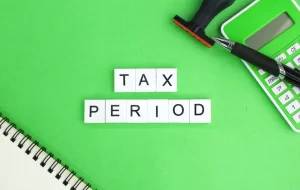Investors with the goal of beating the broader market often turn to stock selection. Strategic choices in individual stocks can have a profound impact on your wealth.
3 Tiny Stocks Primed to Explode
The world's greatest investor — Warren Buffett — has a simple formula for making big money in the markets. He buys up valuable assets when they are very cheap. For stock market investors that means buying up cheap small cap stocks like these with huge upside potential.
We've set up an alert service to help smart investors take full advantage of the small cap stocks primed for big returns.
Click here for full details and to join for free
Sponsored
In the latest session, Unilever plc ADR (NYSE: UL) closed at $59.27 down -3.88% from its previous closing price of $61.66. In other words, the price has decreased by -$3.88 from its previous closing price. On the day, 2.2 million shares were traded. UL stock price reached its highest trading level at $60.04 during the session, while it also had its lowest trading level at $59.06.
Ratios:
For a deeper understanding of Unilever plc ADR’s stock, let’s take a closer look at its various ratios. It provided that stocks Price–to–Cash (P/C) ratio for the trailing twelve months (TTM) is standing at 21.36 whereas its Price-to-Free Cash Flow (P/FCF) for the term is 18.54. For the most recent quarter (mrq), Quick Ratio is recorded 0.56 and its Current Ratio is at 0.77. In the meantime, Its Debt-to-Equity ratio is 1.56 whereas as Long-Term Debt/Eq ratio is at 1.18.
Upgrades & Downgrades
In addition, analysts’ ratings and any changes thereto give investors an idea of the stock’s future direction. In the most recent recommendation for the company, BofA Securities on August 22, 2024, Upgraded its rating to Buy and sets its target price to $72 from $47 previously.
On July 23, 2024, TD Cowen started tracking the stock assigning a Buy rating and target price of $67.
Valuation Measures:
Investors should consider key stock statistics when deciding whether to invest or divest. In the wake of the recent closing price, UL now has a Market Capitalization of 151551016960 and an Enterprise Value of 175861350400. As of this moment, Unilever’s Price-to-Earnings (P/E) ratio for their current fiscal year is 20.79, and their Forward P/E ratio for the next fiscal year is 17.51. The expected Price-to-Earnings-to-Growth (PEG) calculation for the next 5 years is 1.97. For the stock, the TTM Price-to-Sale (P/S) ratio is 2.25 while its Price-to-Book (P/B) ratio in mrq is 6.80. Its current Enterprise Value per Revenue stands at 2.917 whereas that against EBITDA is 14.72.
Stock Price History:
Over the past 52 weeks, UL has reached a high of $65.87, while it has fallen to a 52-week low of $46.46. The 50-Day Moving Average of the stock is -6.74%, while the 200-Day Moving Average is calculated to be 5.80%.
Shares Statistics:
For the past three months, UL has traded an average of 2.08M shares per day and 1954600 over the past ten days. A total of 2.50B shares are outstanding, with a floating share count of 2.48B. Insiders hold about 0.00% of the company’s shares, while institutions hold 9.23% stake in the company. Shares short for UL as of 1728950400 were 2034930 with a Short Ratio of 0.98, compared to 1726185600 on 3034021.
Dividends & Splits
According to the company, the forward annual dividend rate for UL is 1.84, from 1.709 in the trailing year. Against a Trailing Annual Dividend Yield of 0.02771651The stock’s 5-year Average Dividend Yield is 3.53.










